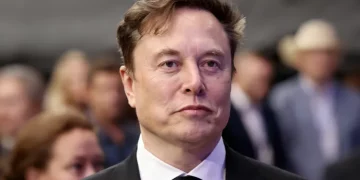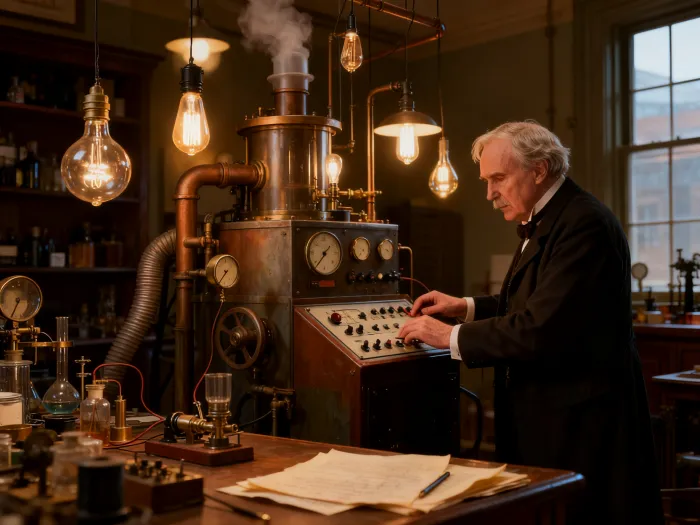Early Life and Formative Years
Thomas Alva Edison, often regarded as one of the most prolific inventors in history, was born on February 11, 1847, in Milan, Ohio. His journey toward becoming a global icon in innovation began humbly. Edison was the youngest of seven siblings in his family, and his parents, Samuel and Nancy Edison, played a significant role in shaping his early years. His father was an exiled political activist from Canada, while his mother was a former teacher whose influence on Edison’s education proved invaluable. Despite having only three months of formal schooling, Edison’s intellectual curiosity and thirst for knowledge were evident from an early age.
Edison’s formal education was cut short due to his perceived inability to fit into traditional academic structures. Teachers reportedly described him as “addled” or unfocused; however, this assessment could not have been farther from the truth. His mother decided to homeschool him, fostering an environment where Edison’s curiosity could flourish. She encouraged him to read extensively and pursue knowledge independently—a practice that became foundational to his later successes. As a child, Edison developed a fascination for science and mechanics, often conducting experiments at home.
By the time Edison was twelve years old, he began working as a newsboy on trains running between Port Huron and Detroit. This job not only exposed him to the bustling industrial hubs of Michigan but also provided him with access to newspapers and books. During this period, he set up a small chemistry lab in one of the train cars where he conducted experiments during his downtime. These formative experiences marked the beginning of his lifelong dedication to scientific inquiry and experimentation.
Another pivotal moment in Edison’s youth occurred when he saved a three-year-old boy from being struck by a runaway train. As gratitude, the boy’s father—a telegraph operator—taught Edison telegraphy. This skill became instrumental in shaping his career trajectory. By age sixteen, Edison had become proficient enough to work as a telegraph operator across various cities. The experience deepened his understanding of communication technologies and laid the groundwork for many of his future inventions.
The Invention of the Light Bulb: A Revolution in Illumination
Among Edison’s numerous contributions to science and technology, none is as universally recognized as the invention of the practical incandescent light bulb. While it is important to note that he did not invent the concept of electric lighting—early prototypes existed before his time—Edison perfected it by creating a commercially viable solution that revolutionized illumination globally.
The journey toward developing the incandescent light bulb began in earnest around 1878 when Edison founded the Edison Electric Light Company with financial backing from prominent investors such as J.P. Morgan and the Vanderbilt family. His goal was clear: to create an affordable and long-lasting electric light source suitable for widespread use.
Edison’s team at Menlo Park—a research laboratory he established in New Jersey—worked tirelessly on this project. After testing thousands of materials for filament durability and efficiency, they discovered that carbonized bamboo fibers provided optimal results for extended use. In October 1879, Edison successfully demonstrated a prototype that could last up to 40 hours. Subsequent refinements increased its lifespan significantly.
The impact of Edison’s invention extended far beyond individual households; it transformed industries and urban landscapes. Electric lighting replaced hazardous gas lamps in factories, improving safety conditions for workers while enabling round-the-clock operations. Cities began adopting electric streetlights, enhancing public safety and convenience during nighttime hours. By 1882, Edison installed the first commercial power station on Pearl Street in Manhattan, providing electricity to customers within a one-square-mile radius.
Edison’s light bulb epitomized his ability to translate abstract scientific concepts into practical applications that addressed societal needs. It also marked the beginning of modern electrical engineering and paved the way for subsequent innovations in power generation and distribution systems.
Expanding Horizons: Contributions Beyond Electrical Engineering
While Thomas Edison is often associated with electricity and lighting technologies, his contributions extended into numerous other domains, including communication systems, sound recording devices, and motion pictures. These inventions collectively shaped modern life and solidified his reputation as a pioneer of industrial innovation.
One of Edison’s earliest breakthroughs was the phonograph—a device capable of recording and reproducing sound—which he patented in 1877. The phonograph amazed audiences worldwide by capturing spoken words or music on wax cylinders for playback at any time. This invention marked the birth of recorded audio technology and laid the foundation for industries such as music production and broadcasting.
Edison also played an instrumental role in advancing motion picture technology. In collaboration with William Kennedy Laurie Dickson at Menlo Park, he developed devices like the kinetoscope—a precursor to modern film projectors—that allowed individuals to view short films through peepholes. Although others refined cinematic technologies further after him, Edison’s contributions were crucial in establishing motion pictures as an entertainment medium.
Beyond individual inventions, Edison demonstrated remarkable foresight by advocating for large-scale industrial research laboratories—a concept that remains integral to innovation today. He believed collaborative efforts among scientists and engineers could accelerate technological progress exponentially compared to solitary endeavors.
Challenges Faced by Edison: Failures That Shaped Success
Despite his extraordinary achievements, Thomas Edison encountered numerous challenges throughout his career that tested both his resilience and ingenuity. Like all inventors striving for groundbreaking discoveries, failure was an inevitable part of Edison’s journey—but it was also a source of valuable lessons.
One notable setback occurred during attempts to develop a magnetic ore separator—a device intended to extract iron ore efficiently from low-grade deposits using electromagnetism—which ultimately proved commercially unviable due to high operational costs relative to output yields.
Similarly controversial were disputes surrounding direct current (DC) versus alternating current (AC) systems during “The War of Currents” between Edison Electric Company (advocating DC) versus George Westinghouse (promoting AC). Although AC eventually prevailed due to its cost-effectiveness over long distances despite fierce opposition from Edison himself—who feared its potential dangers—the competition highlighted critical debates shaping electrical infrastructure development globally.
Legacy: A Lasting Impact on Innovation and Society
Thomas Alva Edison’s legacy transcends mere technological advancements; it embodies perseverance amidst adversity coupled with visionary thinking aimed at improving human lives through science-driven solutions.





























